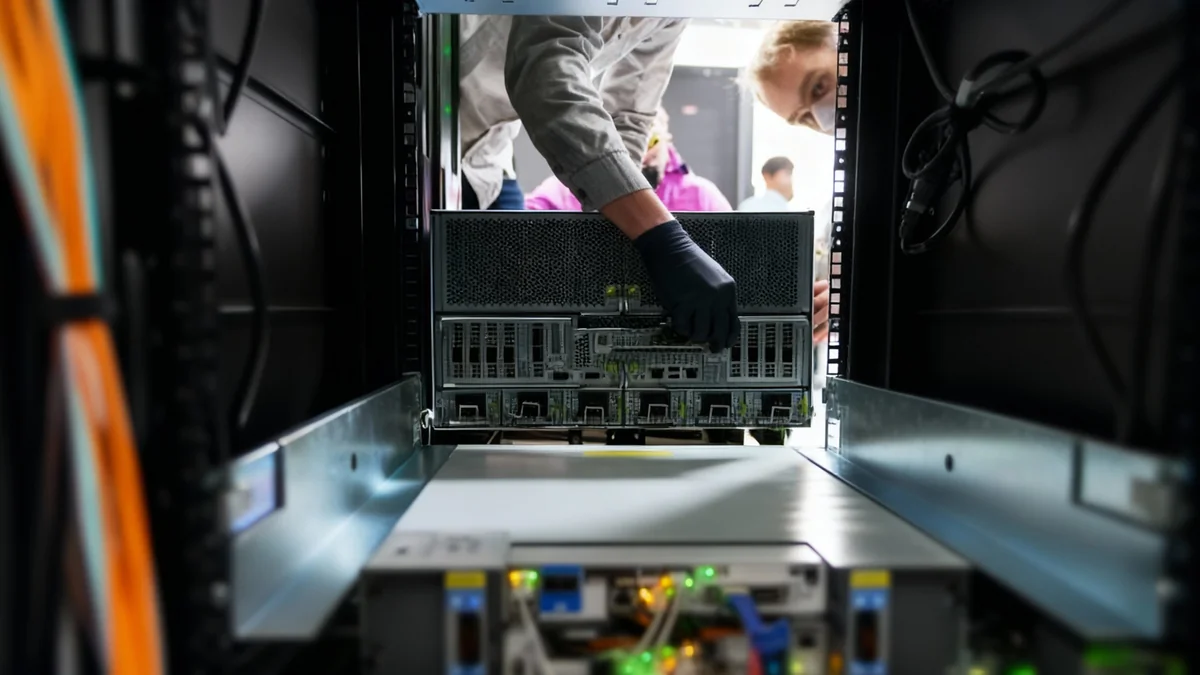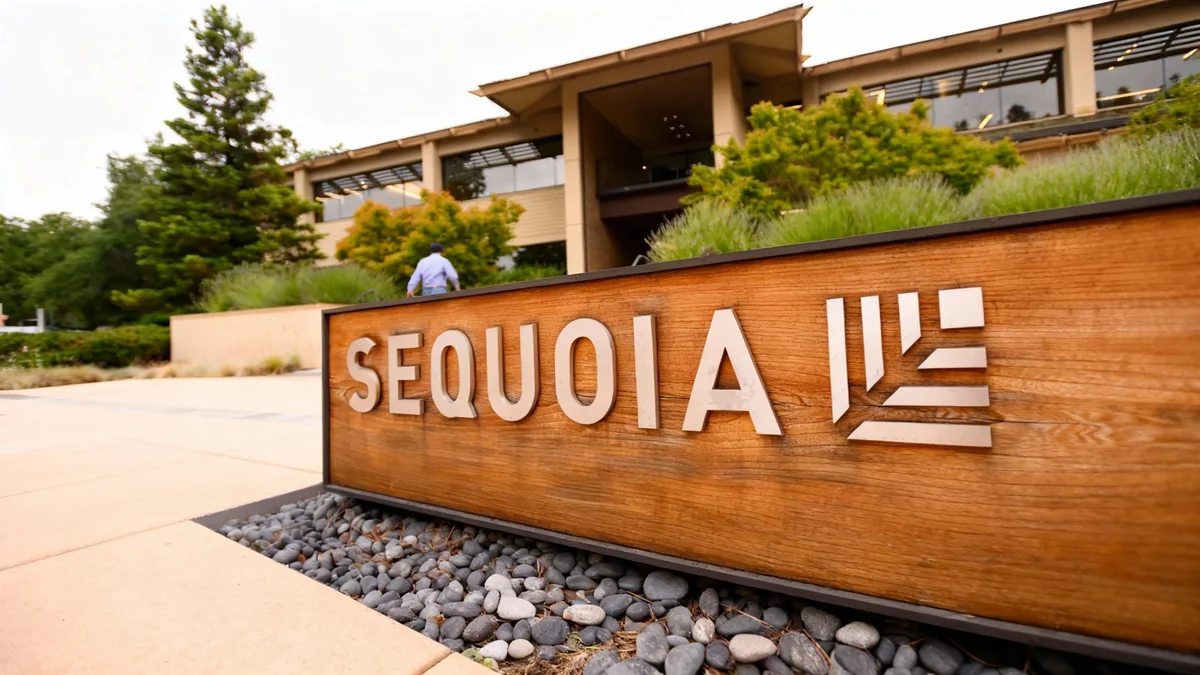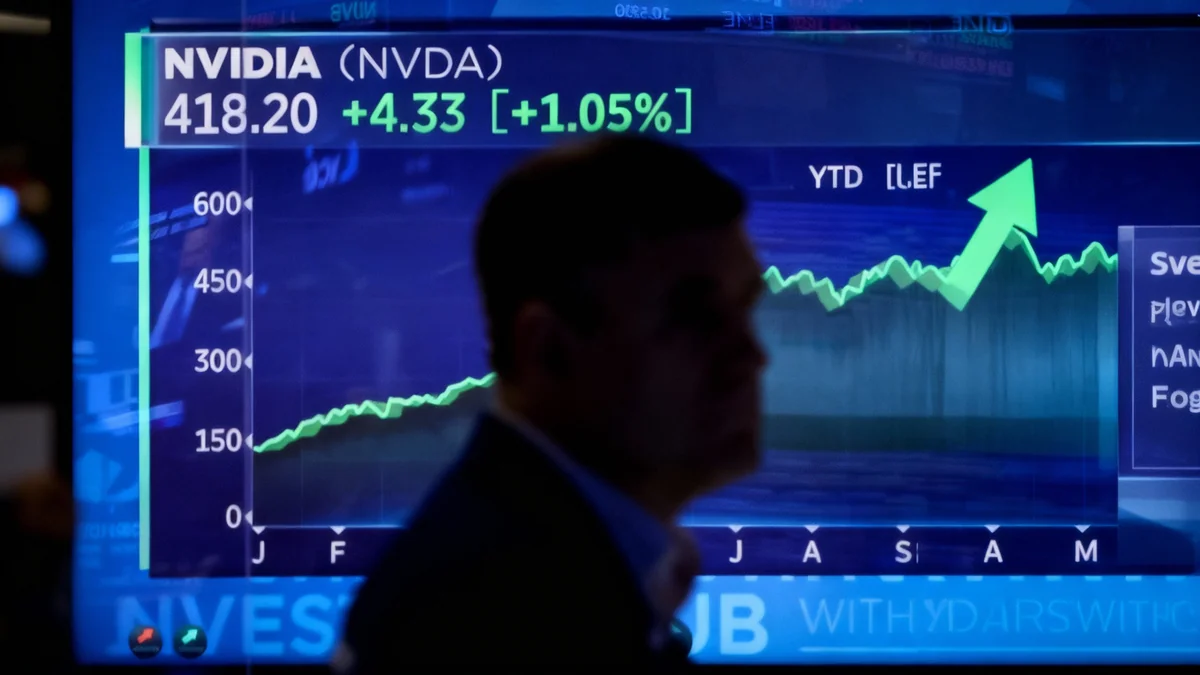Finnish telecommunications company Nokia saw its stock price climb significantly on Tuesday following the announcement of a major strategic investment from technology giant Nvidia. The U.S.-based chipmaker will inject $1 billion into Nokia through an equity investment, a move designed to accelerate development in artificial intelligence infrastructure.
The partnership aims to combine Nvidia's leadership in AI processing with Nokia's expertise in advanced networking hardware. The collaboration sent Nokia's shares soaring, signaling strong investor confidence in the new direction and the potential for both companies in the rapidly expanding AI market.
Key Takeaways
- Nvidia is making a $1 billion equity investment in Finland's Nokia.
- The partnership will focus on developing advanced AI networking solutions.
- Nokia's stock jumped over 14% immediately following the news.
- The collaboration will explore integrating Nokia's data center and optical technologies into Nvidia's AI systems.
A Strategic Alliance for AI Dominance
The core of the deal announced on Tuesday involves a substantial $1 billion equity investment from Nvidia into Nokia. This move is more than just a financial transaction; it marks the beginning of a deep collaboration focused on building the next generation of AI-powered networks.
In a statement, Nokia confirmed the two technology firms will work together on creating integrated AI networking solutions. The primary goal is to leverage Nokia's established strengths in high-performance network infrastructure to support the immense data demands of modern artificial intelligence.
Specifically, the partnership will investigate how Nokia's data-center switching and optical transport technologies can be incorporated into Nvidia's future AI infrastructure architecture. This suggests a strategic effort to build more powerful and efficient systems capable of handling complex AI workloads at scale.
Why This Partnership Matters
Artificial intelligence, particularly large-scale models, requires massive amounts of data to be moved quickly and efficiently between thousands of processors. While Nvidia excels at making the processors (GPUs), the networking hardware that connects them is a critical bottleneck. Nokia's expertise in high-speed optical and switching technology can directly address this challenge, potentially creating a more powerful and cohesive AI hardware ecosystem.
Market Delivers Instant Verdict
Investors responded to the news with immediate enthusiasm. Following the announcement, shares in Nokia experienced a dramatic upward surge. By late afternoon trading, the company's stock was up approximately 14%, reflecting a strong belief in the strategic value of the Nvidia partnership.
This significant jump in valuation provides a much-needed boost for the Finnish telecom equipment maker. It represents market validation of Nokia's pivot towards high-growth sectors like data center technology and its potential role in the foundational infrastructure of the AI economy.
By the Numbers: Nokia's share price increased by 14% by 1539 GMT on Tuesday, a direct market reaction to the announcement of Nvidia's $1 billion investment.
For Nvidia, the investment secures a strategic partner with deep expertise in the networking hardware essential for scaling its AI platforms. By ensuring its AI systems are supported by robust and high-speed connectivity, Nvidia can strengthen its dominant position in the AI chip market.
Building the Future of AI Infrastructure
The collaboration between Nokia and Nvidia addresses a fundamental challenge in the world of artificial intelligence: data movement. As AI models become larger and more complex, the ability to transfer vast datasets between servers and processing units without delay is paramount.
The Role of Nokia's Technology
Nokia's portfolio includes several key technologies that are attractive to a company like Nvidia:
- Data-Center Switching: High-speed switches are the traffic controllers of a data center, directing data flow between servers. Efficient switching is crucial for preventing bottlenecks in AI training and inference tasks.
- Optical Technologies: Optical networking uses light to transmit data over fiber optic cables at extremely high speeds. This technology is essential for connecting racks of servers within a data center and for linking data centers across long distances.
By integrating these technologies directly into its architecture, Nvidia aims to create a more seamless and optimized hardware stack for its customers. This could lead to faster AI model training, more responsive AI applications, and more efficient use of energy in data centers.
"The collaboration will explore opportunities to incorporate Nokia's data-center switching and optical technologies in Nvidia's future AI infrastructure architecture," Nokia stated, outlining the technical focus of the new partnership.
This strategic alignment positions both companies to capitalize on the explosive growth in AI spending. As businesses and researchers demand more powerful computing resources, the underlying network infrastructure becomes just as critical as the processing chips themselves. This $1 billion deal is a clear bet that the future of AI depends on the successful integration of both.





